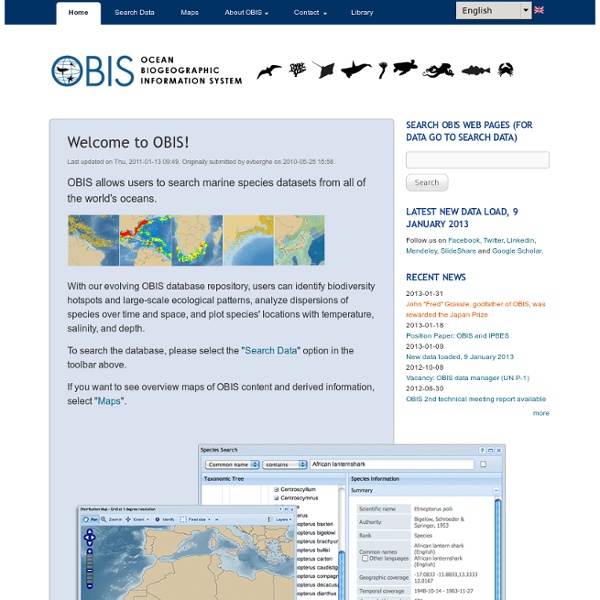



MarBOL:: Marine Barcode of Life Initiative Home - Lophelia.org, the Cold-water coral, deep-sea coral and deep-water coral resource SEA LEVEL DATA FACILITY SeamountsOnline Home, Arctic Ocean biodiversity CCRI Website, Puerto Rico Data Services Capacity Development is crucial in empowering the institutions participating in ODINAFRICA-IV to enable them deliver the planned products. The following mechanisms will be used to achieve this: • New partner institutions will require a full cycle of training (basic, intermediate, advanced) customized to their desired level of expertise. • Established institutions that need refresher training: Customized training, based upon the weaknesses identified either by the partner institution and/or by the assessment will be required. • Continuous Professional Development Training: the rapidly developing technology requires regular training and re-training for all partners. Participation in relevant conferences and workshops will also be encouraged as this will enable the experts to exchange ideas with their colleagues, and thus strengthen the skills base available in the institutions.
GBIF Try out the new GBIF portal! Why not try out the new GBIF portal at www.gbif.org, which has many more features and includes lots of information about the GBIF community, including great examples of data uses in research and interesting applications? The old GBIF data portal which you are viewing now will continue to be supported until we are satisfied it can be taken down without causing major inconvenience. Be aware that the content here is static and has not been updated since the launch of the new portal on 9 October 2013. Welcome to the (former) GBIF Data Portal Access 416,242,316 data records (363,215,360 with coordinates) shared via the GBIF network. Explore Species Find data for a species or other group of organisms. Species Information on species and other groups of plants, animals, fungi and micro-organisms, including species occurrence records, as well as classifications and scientific and common names. Example species: Puma concolor (Linnaeus, 1771) Explore Countries Countries France
BBC - Natural History Museum surveys New Forest biodiversity A snapshot of biodiversity in the New Forest is being taken by experts from the Natural History Museum. As part of a large-scale study project, they will revisit the area in 10 years' time to map any changes in the landscape. Forty plots within six habitats across the forest are being used to sample lichens, algae, insects and soil. A parallel project is taking place in Paraguay later this year. Ongoing study It is hoped this data will provide a baseline from which comparisons can be made when the study is repeated in 10 years time. Ian Barker, New Forest National Park Authority ecologist said: "The New Forest continues to be a magnificent landscape with an abundance of really special wildlife. "Insects, lichen and soils - which are the building blocks of biodiversity are often overlooked because people are generally more interested in the bigger species such as birds. The New Forest is the most densely populated national park in the UK and has over 13 million visitors each year.
ISRS, International Society for Reef Studies ODINAFRICA - Ocean Data and Information Network of Africa Global Environment - Biodiversity - Decidious Forest Biome This biome is found in three separate regions in the northern hemisphere. The types of trees you can find in these three regions are broad leafed deciduous trees and some of the evergreen species. The trees are more commonly known as ash, beech, birch and northern arrowwood. Also found in this biome are wild flowers such as oxlip, bluebells, painted trillium and primrose. As well as things such as carpet moss, tawny milk-cap mushrooms and lady fern. The soil is very fertile. There are many types of animals in the deciduous forest ranging from mammals like deer to bugs like mosquitoes. A few common animals found in the deciduous forest are, deer, gray squirrels, mice raccoons, salamanders, snakes, robins, frogs and many types of insects. Most deciduous forests are found in Eastern North America somewhere around 35-48° N, and Europe and Asia around 45-60° N. The average temperature is around 50° F (about 10° C).